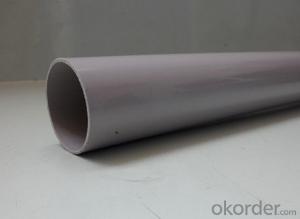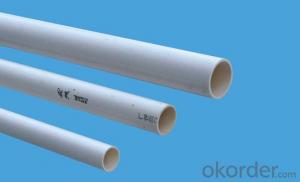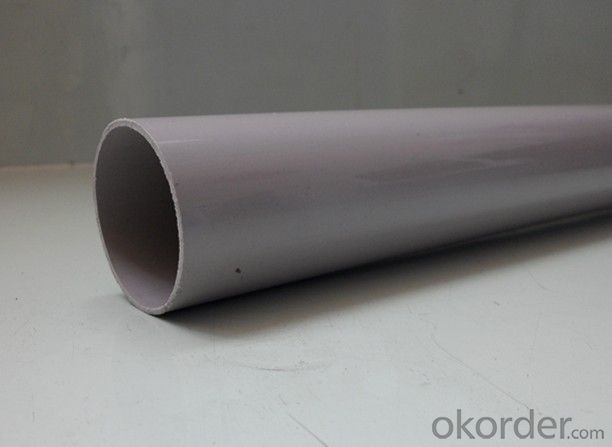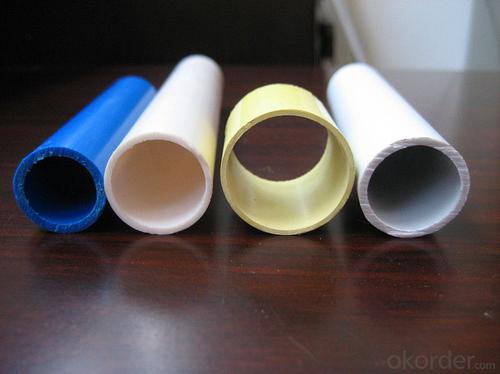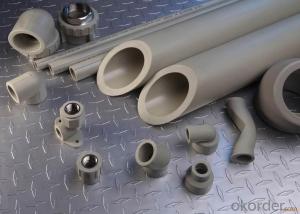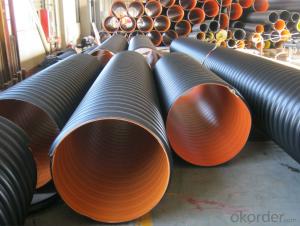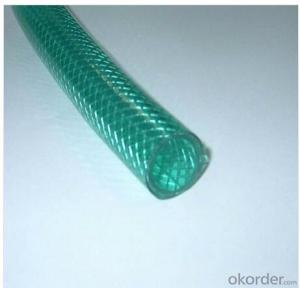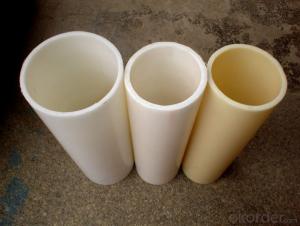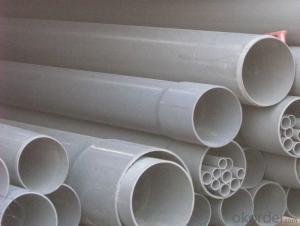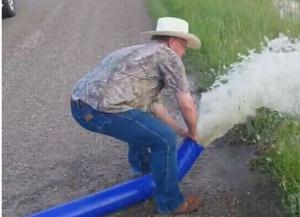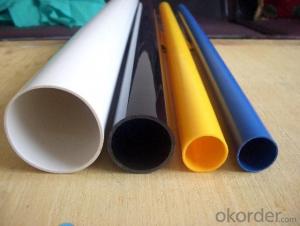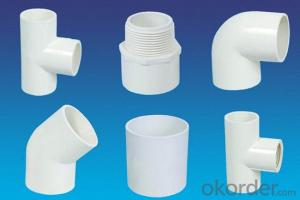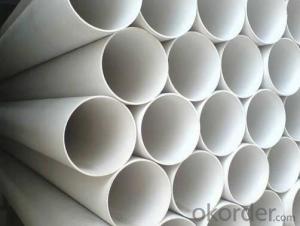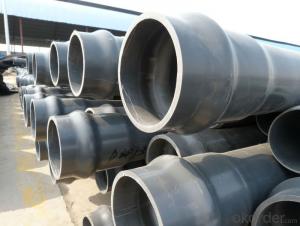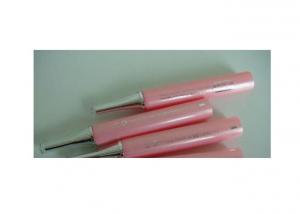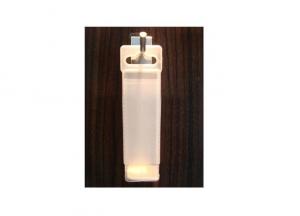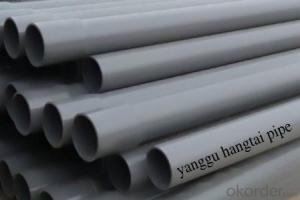Plastic Tubes - PVC Tubes UPVC Drainage Pipes Made in China with Good Quality
- Loading Port:
- Tianjin
- Payment Terms:
- TT OR LC
- Min Order Qty:
- 100 kg
- Supply Capability:
- 1000 kg/month
OKorder Service Pledge
OKorder Financial Service
You Might Also Like
Specifications
pvc pipe for water drainage
1.Specification of pvc pipe:40mm-400mm
2.Thickness of pvc pipe:1.2mm-7.0mm
3.ISO certified.
Properties of pvc pipes:
1. Material: pvc pipe unplasticized polyvinyl chloride
2. Standard: GB, ISO9001, ISO14001
3. Color: white pvc pipe, grey pvc pipe , etc.
4. Specific Gravity, g/cm3, 20(C): 1.35 - 1.55
5. Vicat Softening Temperature, (C) >=79
6. Longitudinal Reversion, %, 150(C) <=5< span="">
7. Dichloromethane Resistance Test: No attack
8. Falling Weight Impact Test, TIR, %, 0(C) <=10< span="">
9. Tensile Yield Strength, Mpa >=40
10. Fitness of Water Tightness Test: No Leakage
11. Fitness of Air Tightness Test: No Leakage
Features of pvc pipes :
1) Light weight, easy to load and unload: PVC pipe is very light, convenient to handle loading unloading, and installing.
2) Good chemicals and drugs resistance: PVC pipe has its excellent resistance to the erosion caused by acids and alkalines, a great help to the chemical industries.
3) Small resistance to fluidity: The smooth surface reduces resistance to the fluids. Its roughness coefficient is only 0.009, much less than other pipes, Under same discharges, smaller cabibre of the pipe can be uesd.
4) Strong mechanical strength: Good resistance to water pressure, outside impact and pressure, is satisfied under any conditions.
5) Good electrical insulation: excellent insulation nature against electricity. the pvc pipe can be served as conduits and pipes in construction cable and wire.
6) Water quality unaffected: The solution tests on the PVC pipe show no affect on water quality when the water flows through is. It is considered the best piping material for running water works.
7) Simple installation: Very easy to connect, thus much time and laborcost may be saved.
Application of pvc pipes:
1) Structure Engineering, home water supply and drainage |
Specifications of the pvc pipe:
Outer Diameter (mm) | Wall thickness(mm) | |||||||
2.5MPA | 2.0MPA | 1.6MPA | 1.25MPA | 1.0MPA | 0.8MPA | 0.63MPA | ||
φ20 | 20*2.3 | 20*2.0 | ||||||
φ25 | 25*2.8 | 25*2.3 | 25*2.0 | |||||
Φ32 | 32*3.6 | 32*2.9 | 32*2.4 | 32*2.0 | ||||
Φ40 | 40*4.5 | 40*3.7 | 40*3.0 | 40*2.4 | 40*2.0 | |||
Φ50 | 50*5.6 | 50*4.6 | 50*3.7 | 50*3.0 | 50*2.4 | 50*2.0 | ||
Φ63 | 63*7.1 | 63*5.8 | 63*4.7 | 63*3.8 | 63*3.0 | 63*2.5 | 63*2.0 | |
Φ75 | 75*8.4 | 75*6.9 | 75*5.6 | 75*4.5 | 75*3.6 | 75*2.9 | 75*2.3 | |
Φ90 | 90*10.1 | 90*8.2 | 90*6.7 | 90*5.4 | 90*4.3 | 90*3.5 | 90*2.8 | |
Φ110 | 110*10.0 | 110*8.1 | 110*6.6 | 110*5.3 | 110*4.2 | 110*3.4 | 110*2.7 | |
Φ125 | 125*11.4 | 125*9.2 | 125*7.4 | 125*6.0 | 125*4.8 | 125*3.9 | 125*3.1 | |
Φ140 | 140*12.7 | 140*10.3 | 140*8.3 | 140*6.7 | 140*5.4 | 140*4.3 | 140*3.5 | |
Φ160 | 160*14.6 | 160*11.8 | 160*9.5 | 160*7.7 | 160*6.2 | 160*4.9 | 160*4.0 | |
Φ180 | 180*16.4 | 180*13.3 | 180*10.7 | 180*8.6 | 180*6.9 | 180*5.5 | 180*4.4 | |
Φ200 | 200*18.2 | 200*14.7 | 200*11.9 | 200*9.6 | 200*7.7 | 200*6.2 | 200*4.9 | |
Φ250 | 250*11.9 | 250*9.6 | 250*7.7 | 250*6.2 | ||||
Φ315 | 315*15.0 | 315*12.1 | 315*9.7 | 315*7.7 | ||||
Φ400 | 400*19.6 | 400*15.3 | 400*12.3 | 400*9.8 | ||||

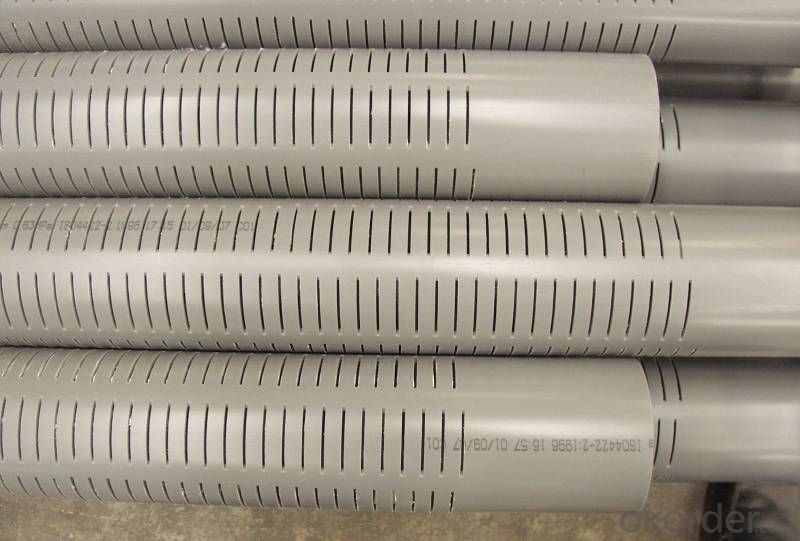
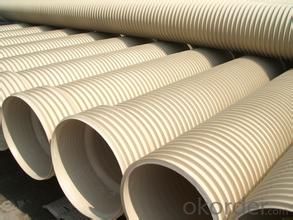
- Q: What is the difference between rigid and rigid and semi rigid in electric PVC plastic pipes?
- The essence of PVC is a kind of vacuum blister film. It is used in the surface packing of various panels, so it is also called decorative film and adhesive film. It is applied to many fields such as building materials, packaging, medicine and so on. Among them, the building materials industry accounted for the largest proportion, 60%, followed by the packaging industry, as well as other small range of applications.
- Q: Such as polypropylene, polystyrene etc. I need to know for a science project.Thanks!
- plastic like recycle
- Q: How do plastic tubes compare to cardboard tubes in terms of strength?
- Plastic tubes generally tend to be stronger than cardboard tubes. They offer higher resistance to bending, crushing, and tearing due to their rigid and durable nature. Plastic tubes are also less prone to moisture damage, allowing them to maintain their strength over time. However, it should be noted that the specific strength of plastic tubes can vary depending on the material and thickness used.
- Q: In my vaccum cleaner, plastic hose and steel extension tube are stuck.How can i unlock them?will any product like PB blaster or any penetrating oil help.Can someone please advise..
- On the steel extension tubes you could use a touch of wd40. This may work where the tube connects to the plastic hose as well, but wd40 can have an effect on some plastics, so take care. It maybe better to use a drop of cooking oil.
- Q: I remember we use to have tubes that bent up well but were very soft a tin like material that eventually they found because it had lead in them it leached into the toothpaste such that now we have plastic toothpaste tubes predominatly made in the US.
- That sounds about right. I do remember those tubes that rolled up easily and were made of a bendable metal. In those days, I was pretty bad about brushing my teeth so it's probable that I wasn't affected that much by whatever lead content there was. I did get a lot of cavities, though.
- Q: Where is the orifice tube located in a 2000 Pontiac Grand Prix3.8 liter V-6
- Recover the refrigerant. Refer to Refrigerant Recovery and Recharging . Remove the engine air cleaner. Refer to Air Cleaner Assembly Replacement in Engine Controls--3.1L or Air Cleaner Assembly Replacement in Engine Controls--3.8L. Remove the vacuum brake booster. Refer to Power Vacuum Brake Booster Replacement in Hydraulic Brakes. Remove the condenser tube. Refer to Condenser Tube Replacement . Remove the expansion (orifice) tube: 5.1. Use needle-nose pliers in order to grip the orifice tube. 5.2. Use a turning motion along with a push-pull motion in order to loosen the impacted orifice tube. 5.3. Remove the orifice tube. Important: DO NOT use any solvents or chemicals to clean the expansion (orifice) tube porous plastic inlet filter. Inspect the expansion (orifice) tube for the following conditions and clean or replace with a new tube as indicated: ? Broken plastic frame (1) ; replace tube. ? Inlet filter (3) damaged or plugged with fine gritty material; replace tube. ? Inlet filter (3) coated with metal chips, flakes, or slivers; coating may be removed with low pressure shop air ONLY and reused if cleaned satisfactorily. ? If reusing the tube, discard the O-ring seals (2). Installation Procedure
- Q: How do you get a plastic tube on your shoelace? What's the name of the machine? Thank you
- Use the shoelace to head the machineShoelace heading machine, also known as "buckle machine", "Baotou machine", "tie machine".
- Q: What are the advantages of using plastic tubes in plumbing applications?
- There are several advantages of using plastic tubes in plumbing applications. Firstly, plastic tubes are lightweight and easy to handle, making installation and maintenance simpler. They are also resistant to corrosion, which increases their lifespan compared to metal pipes. Additionally, plastic tubes have smooth inner surfaces, reducing the risk of clogs and improving water flow. They are also flexible, allowing for easy routing around obstacles and minimizing the need for additional fittings. Lastly, plastic tubes are cost-effective compared to other materials, making them a popular choice for plumbing applications.
- Q: I own a 1995 Toyota Celica. A plastic tube next to the aluminum tube eventually rubbed a hole. Can this aluminum tube be repaired, or do I have to replace the entire thing?
- I doubt it. If it's an AC line it has to be replaced. Aluminum is difficult to weld,
- Q: I've just started my phlebotomy class and have 8 different colors tubes which are Yellow (Sterile tube), Light Blue, Red,Gold(SST), Light Green(PST), Green,Lavender, and Grey. I'm having trouble understanding what tubes go where.... like I know Red tube is used for Chemistry and Light Blue is used for Coagulation..... The book really isan't that great so I'm kind of confused... Also I've looked on the internet and they mention a pink tube that is used for blood going to the blood bank but there is no pink tube mentioned anywhere in my book. If anyone could take the time to help me out with this I would appreciate it so much and gladly give you the 10 points...... My instructor is great at the hands on portion of actually drawing the blood but lacking very much so in the lecture portion.... so as you can imagine I'm lost! Thanks so much!
- That's not true! The PINK tube has EDTA and is used in blood bank. It replaces having to draw a plain red to for serum and a purple top. Pink rubber top tube contains an additive called ethylenediaminetetraacetic acid (EDTA), or potassium salt. This tube is used for full blood counts (CBC) required for blood banks, blood type screening, or blood cross-match.
Send your message to us
Plastic Tubes - PVC Tubes UPVC Drainage Pipes Made in China with Good Quality
- Loading Port:
- Tianjin
- Payment Terms:
- TT OR LC
- Min Order Qty:
- 100 kg
- Supply Capability:
- 1000 kg/month
OKorder Service Pledge
OKorder Financial Service
Similar products
Hot products
Hot Searches
Related keywords
